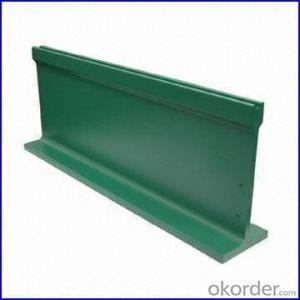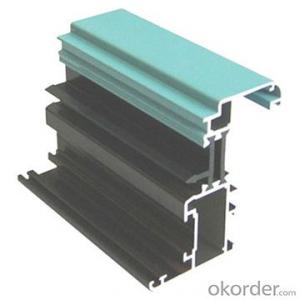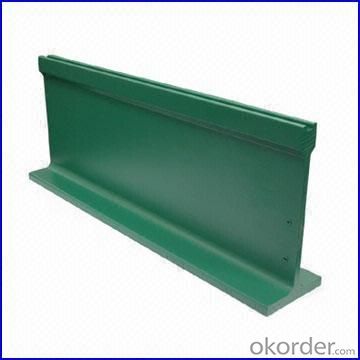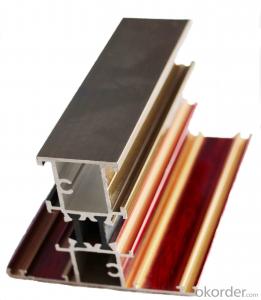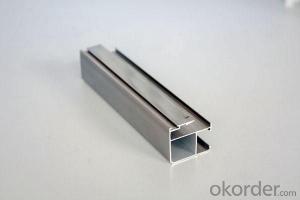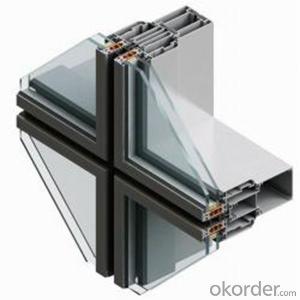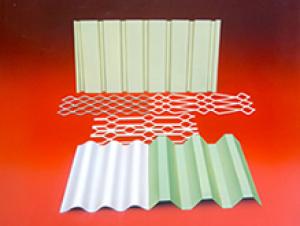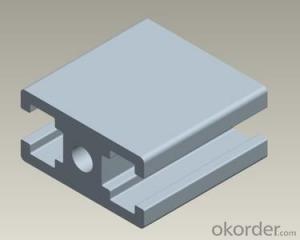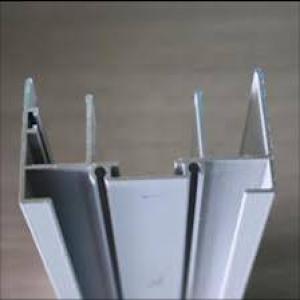Round Aluminum Extrusion Profiles for Decoration
- Loading Port:
- China Main Port
- Payment Terms:
- TT OR LC
- Min Order Qty:
- -
- Supply Capability:
- -
OKorder Service Pledge
OKorder Financial Service
You Might Also Like
Aluminium is a relatively soft, durable, lightweight, ductileand malleablemetalwith appearance ranging from silvery to dull gray, depending on the surfaceroughness. It is nonmagnetic and does not easily ignite. A fresh film ofaluminium serves as a good reflector (approximately 92%) of visible lightand an excellent reflector (as much as 98%) of medium and far infraredradiation. The yield strength of pure aluminium is 7–11 MPa,while aluminium alloys have yield strengths ranging from200 MPa to 600 MPa. Aluminium has about one-third the densityand stiffness of steel. It is easily machined,cast, drawn and extruded.
Features:
Material | Alloy 6063,6061,6005or according to customer’s choice |
Temper | T3, T4, T5, T6 |
Surface | Anodize, electrophoresis, powder coating, PVDF coating, wood grain painting, matted, etc. |
Length | Coating 6.5 meters, Anodizing 6.5 meters, Mill finish 5 meters |
Application | Industrial, electrical equipment(TV set, air conditioner, refrigerator, computer), decoration,construction, transportation |
Custom Made | We can package following with customer's request. |
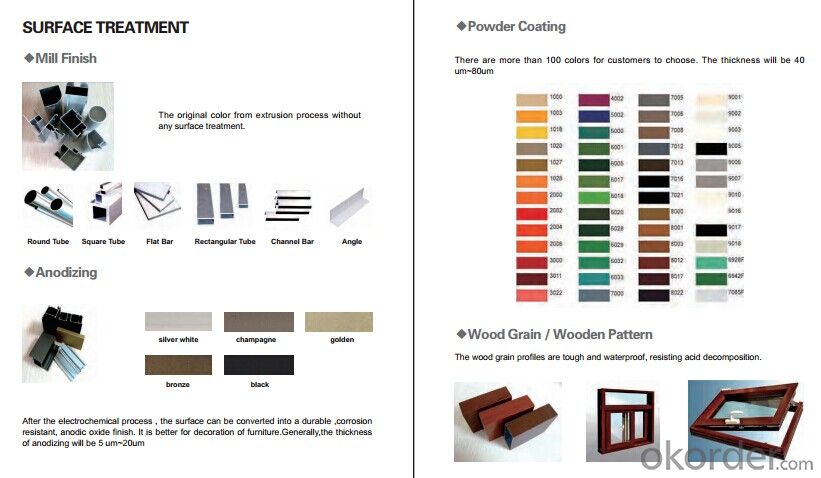

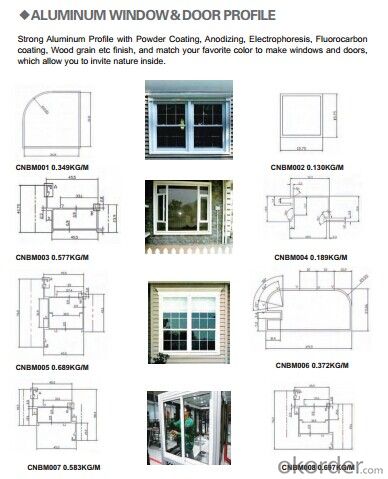
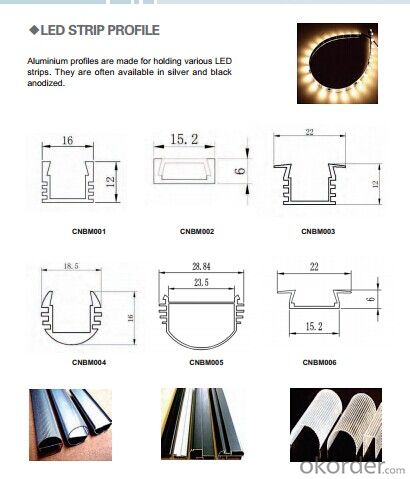
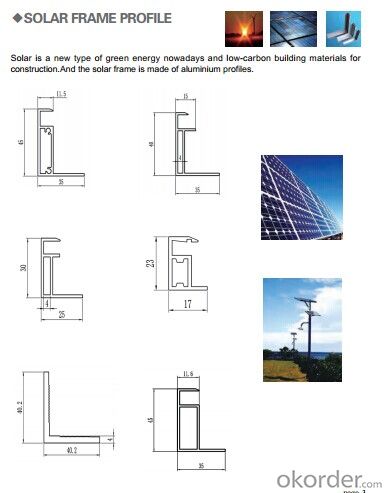
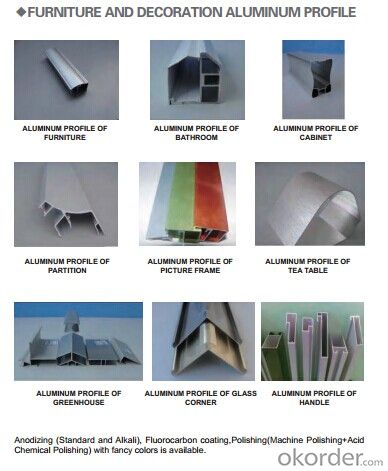
- Q: What are the vibration damping properties of aluminum profiles?
- Aluminum profiles exhibit good vibration damping properties due to their inherent material properties, such as high stiffness and low density. These properties enable the profiles to effectively absorb and dissipate vibrations, reducing their transmission through the structure. Additionally, aluminum profiles can be further enhanced with damping materials or techniques to improve their vibration damping capabilities.
- Q: Can aluminum profiles be extruded into hollow profiles?
- Of course you can. But it depends on what brand and specific specifications you use
- Q: Aluminum surface treatment products we have color (pure black and beige wood etc.), the surface coating by scratching the surface, color and color difference of aluminum (aluminum color, the background is simple) after repair or there will be a difference at present, technical staff provides a profile of color, it can paint pen profile the scratch (paint pen according to the material surface spray paint, please fill out this factory can scratch the gap! It's really hard to findConsult an expert who specializes in aluminum processing. What's the effective remedy for scratching after spraying? Are there any professional manufacturers of this kind of paint pen?
- Please fill out paint pen manufacturers can scratch the gap, is the best way, the color of the paint can't find the same, have a great relationship with the concentration ratio, so, when buying sheet with requirements of factory repair paint pen!
- Q: Acrylic coating principle, coating on the aluminum section, he and fluorocarbon powder spraying, what is the difference
- Compared with the other two spraying methods, the best quality, the most beautiful appearance, but the price is expensive, not green. Used in high-end buildings, commercial building more
- Q: This question asks for methods to prevent aluminum profiles from rusting during the transportation process.
- <p>To prevent rusting of aluminum profiles during transportation, ensure proper packaging with moisture-resistant materials. Use protective films or covers to shield the profiles from direct contact with moisture and humidity. Maintain a controlled environment in the transport vehicle, avoiding high humidity and condensation. Regularly inspect the profiles for any signs of moisture or damage and address them promptly. Additionally, consider using rust inhibitors or anti-corrosion coatings on the aluminum profiles before packaging. Always handle the profiles with care to avoid scratches or damage that could lead to rusting.</p>
- Q: Are aluminum profiles compatible with other materials for construction purposes?
- <p>Yes, aluminum profiles can be used in combination with other materials in construction. They are often paired with steel, glass, and various plastics due to their lightweight, durability, and corrosion resistance. Aluminum's ability to be easily joined and its compatibility with different finishes make it a versatile choice for construction projects.</p>
- Q: Can aluminum profiles be painted or coated?
- Aluminum profiles possess the ability to undergo painting or coating processes. The versatility of aluminum as a material allows for easy application of paint or coating, thereby enhancing its appearance, providing corrosion resistance, and improving durability. Numerous techniques exist for painting or coating aluminum profiles, such as powder coating, anodizing, and liquid coating. Powder coating stands as a favored option due to its capacity to deliver a lasting and consistent finish, while anodizing forms a protective oxide layer on the aluminum's surface. Conversely, liquid coating offers a broad spectrum of colors and finishes. In summary, painting or coating represents an effective and practical choice for individuals seeking to alter color, enhance aesthetics, or safeguard aluminum profiles.
- Q: The aluminum and Fenglv aluminum material which is better suited for doors and windows
- Al Feng is one of the ten famous material, certainly no problem. But Feng packaging is too thick, high cost. To do the doors and windows of the aluminum used to choose cost-effective, as a special material for the sale of aluminum, I have the following recommendations: 1. The window wheel is good, and the pressed glass should be durable and corrosion resistant. 2. doors and windows sealing performance better, 3. pages to be matched with materials, gauze or rust, and thickness and density better than 4. The cost performance is high, the surface treatment layer of the profile is electrophoresis, and the electrophoresis layer should be thick. 5. The mounting frame needs to be hit to the horizontal line.
- Q: Can aluminum profiles be used for conveyor belts?
- Yes, aluminum profiles can be used for conveyor belts. Aluminum profiles are lightweight, durable, and have good corrosion resistance, making them suitable for conveyor belt applications. They also offer flexibility in design and can be easily customized to meet specific conveyor requirements.
- Q: What are the advantages of using aluminum profiles in the railway industry?
- There are several advantages of using aluminum profiles in the railway industry. Firstly, aluminum is lightweight yet durable, which helps reduce the overall weight of the train and improve fuel efficiency. Secondly, aluminum profiles offer excellent corrosion resistance, ensuring the longevity and low maintenance of the railway components. Additionally, aluminum profiles are highly recyclable, making them environmentally friendly. Moreover, aluminum's excellent thermal conductivity allows for efficient heat dissipation, ensuring the safety and performance of electrical systems in the railway industry. Lastly, aluminum profiles offer design flexibility, making it easier to create complex shapes and structures, ultimately enhancing the aesthetics and functionality of railway components.
Send your message to us
Round Aluminum Extrusion Profiles for Decoration
- Loading Port:
- China Main Port
- Payment Terms:
- TT OR LC
- Min Order Qty:
- -
- Supply Capability:
- -
OKorder Service Pledge
OKorder Financial Service
Similar products
Hot products
Hot Searches
Related keywords
